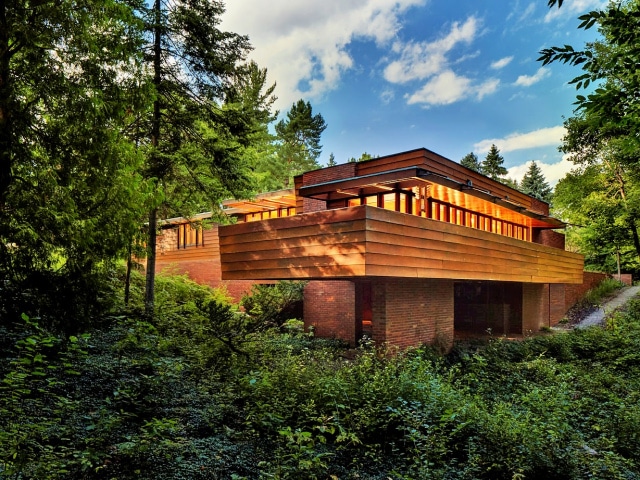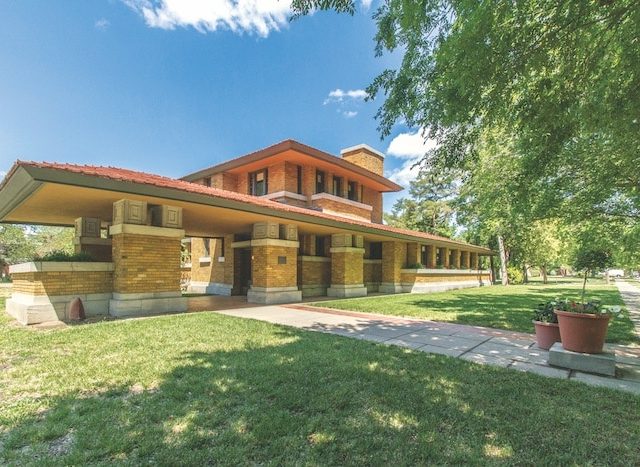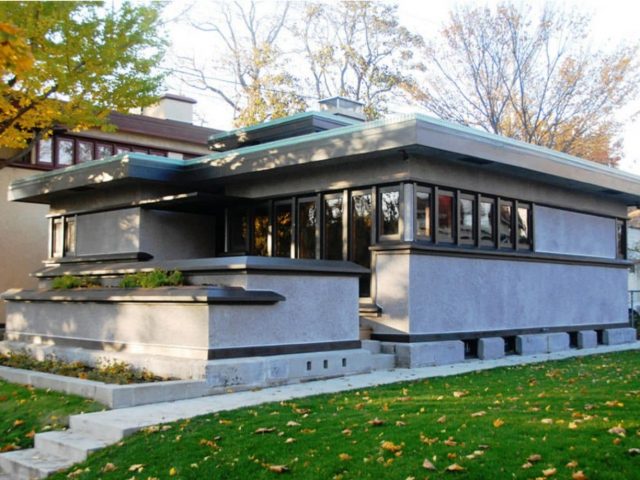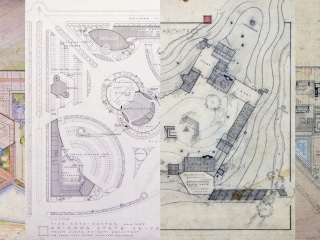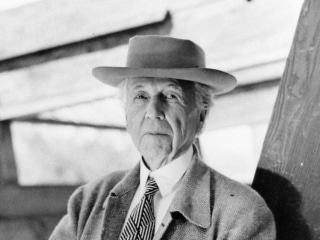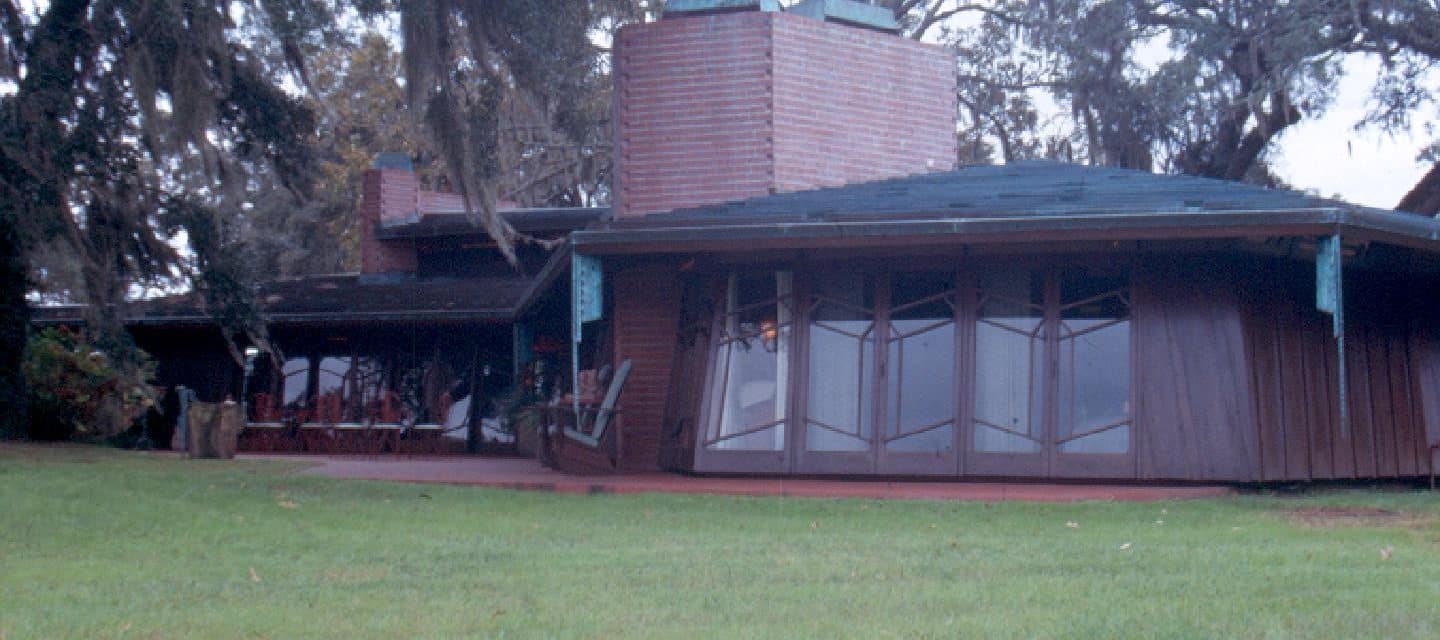
C. Leigh Stevens House, “Auldbrass Plantation”
When Michigan industrialist C. Leigh Stevens challenged Wright to create a plantation that would reflect contemporary use and economics while remaining true to its southern root, Wright designed Auldbrass.
A modification of ”Old Brass,” the name given to the 4,000-acre tract of land on the banks of the Combahee River, the plantation is one of the largest and most complex residential projects Wright ever undertook. Wright’s vision—including a main house, guest house, cabins, caretaker’s residence, staff cabins, barn stables, aviary and pond with floating ‘dining barge’—manages to incorporate his characteristic pagoda-like spires, hexagonal motifs, and organic influences. Linked by esplanades, the collection of slender, one-story buildings feature exterior walls made of native cypress and set at an 80-degree angle to recall the slant of the oak trees that dot the property. Though Wright worked on the Auldbrass commission over a twenty-year period, only half of the planned buildings were realized before the death of both Wright and the client. The plantation had fallen into disrepair until it was bought by acclaimed Hollywood producer Joel Silver (Lethal Weapon, The Matrix, Die Hard) in 1986. With the help of the architect’s grandson, Eric Lloyd Wright, Auldbrass was meticulously restored and eventually completed.
